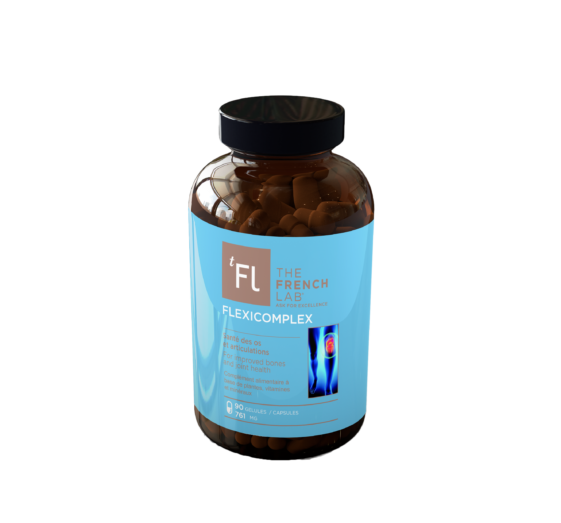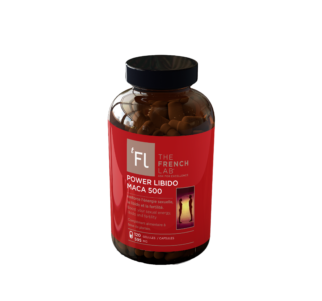- 1
Glucosamine sulphate and chondroitin sulphate
These substances protect cartilage. They belong to the family of chondoprotective compounds. They have been assessed and recommended for use in medical treatments by European specialists in rheumatology and osteoarthritis (EULAR – the European League against Rheumatism), having been placed in level of evidence category 1A (the best category) in terms of the existence of evidence for their being effective in reducing pain and generally having a positive impact upon the development of osteoarthritis in knees.
Glucosamine sulphate is a highly-concentrated natural amino-sugar extracted from the exoskeletons of crustaceans. When we are young, our body produces glucosamine sulphate itself. It is one of the constituents of synovial fluid and the layers of cartilage that act as lubricants and shock absorbers for our joints. The sulphur contained in glucosamine sulphate is an important element which is a key component of some amino acids. These can make a significant contribution to the health of cartilage tissue. It helps regain lost flexibility, which is essential for ensuring joint cartilage strength and elasticity. The body needs an adequate dose of sulphur for healthy joints. Dietary supplements containing sulphur, for instance, marine algae-derived polysaccharides, can help strengthen cartilage, prevent it from ‘drying out’ and increase its flexibility, thus significantly improving patient quality of life.
Glucosamine is the term commonly used for 2-amino-2-desoxy-D-glucopyranose, a natural substance (amino-sugar). This key substance is required, amongst other things, for healthy cartilage structure and synovial fluid. It is found in large molecular components (polymers) in cartilage known as proteoglycans. These polymers attract water molecules and so help maintain elasticity and adequate levels of water in cartilage, which is actually principally composed of water! Moreover, these polymers promote hyaline cartilage strength.
Chondroitin sulphate is the glycosaminoglycan with the greatest water-binding capacity. This characteristic helps promote the tensile and mechanical properties of cartilage relating to frictionless movement, elasticity and shock absorption.
- 2
Harpagophytum procumbens
This is a plant that grows in the arid regions of south-east Africa. It contains active chemical constituents (harpagosides) which can improve the mobility of painful, swollen joints.
Harpagoside, harpagide, procumbide and beta-sitosterols are its 4 main active ingredients. These are responsible for the anti-inflammatory, anti-rheumatic effects of this plant, which is also called ‘devil’s claw’.
The plant’s effectiveness in relieving issues connected with osteoarthritis, rheumatoid arthritis and rheumatic diseases in general has been scientifically proven by numerous clinical studies. This is mostly due to the anti-inflammatory properties of harpagoside (one of harpagophytum’s active ingredients).
The role of Harpagophytum in promoting good health
- Works against all rheumatic diseases by reducing inflammation and pain.
- Relieves the severity of osteoarthritis flare-ups by reducing joint stiffness and lessening periarticular muscle contractions.
- Reduces the incidence of severe pain in the areas affected by rheumatic diseases.
- 3
Bamboo exudate
This contains silicon dioxide (silica), which is a trace element founds in almost all living creatures.
Silicon is an ingredient of collagen, elastin and artery walls. It is needed to help make bones, tendons, ligaments, cartilage, skin, hair, nails and dental enamel.
It is required for skeletal development.
With age, silicon levels in the body decrease.
This is why it has traditionally been used to relieve the symptoms of rheumatic diseases and to make hair and nails look healthier.
- 4
Vitamine C
Vitamin C, (chemical name: ascorbic acid), is a water-soluble vitamin that’s a powerful antioxidant. It is crucial to the production of the collagen fibre contained in the walls of blood vessels, skin, tendons and ligaments, cartilage, gums etc.
The use of ascorbic acid to treat osteoarthritis is due to the major role it plays in producing collagen, a protein that is essential in the production of cartilage and bone.
The hydroxylation of proline and lysine to form hydroxyproline and hydroxylysine – two key components of collagen – requires Vitamin C to act as a cofactor.
Oxidative stress has a negative impact upon collagen metabolism.
There would appear to be some kind of positive correlation between the Total Antioxidant Capacity and the production of collagen in patients affected by osteoarthritis.
Vitamin C encourages the metabolism of chondrocytes and is needed in the synthesis of collagen and proteoglycans, which are major constituents of cartilage. Furthermore, it has a chondoprotective effect upon the knee.
A clinical study has highlighted that there is diminished risk of cartilage loss, pain and the development of osteoarthritis in the knee when individuals take more than 75 mg of vitamin C on a daily basis.
Vitamin D3
Vitamin D plays a vital role in the process of calcium and phosphorous absorption, increasing their intestinal absorption and reducing loss through renal excretion in urine.
This helps promote bone mineralization. As a result, it is used to ward off and treat osteoporosis, (when combined with calcium), rickets and osteomalacia (illnesses caused by vitamin D deficiency which result in abnormalities in bone development and formation). Many medical studies have shown that taking vitamin D can increase bone density and reduce the risk of fractures in individuals over the age of 50, especially in post-menopausal women.
- 5
Copper sulphate
Copper (Cu) is a trace element which is involved in many cellular biochemical reactions. It is absolutely essential for living things. It’s the third most abundant trace element in the human body after iron and zinc. The quantity of copper in an adult’s body is estimated at between 50 and 150 mg.
This quantity lessens over time. Copper is indispensable in building up tendons and cartilage and in bone mineralization.
Its usefulness in treating osteoarthritis stems from its antioxidant properties. Copper helps combat oxidative stress and therefore cellular ageing.
In in vitro tests, it has been shown that copper significantly increases the synthesis of collagen in chondrocytes of humans suffering from osteoarthritis.
It could therefore be used to help regulate the production of collagen in chondrocytes, which is why it could be used to treat osteoarthritis.
Hyaluronic acid
Hyaluronic acid helps protect joints by increasing the viscosity of synovial fluid and by increasing the elasticity of cartilage.
Hyaluronic acid has viscoelastic properties: combined with water, it forms a deformable, elastic gel, enabling it to act as a lubricant and a shock absorber.









